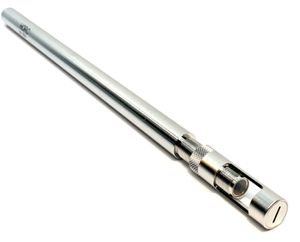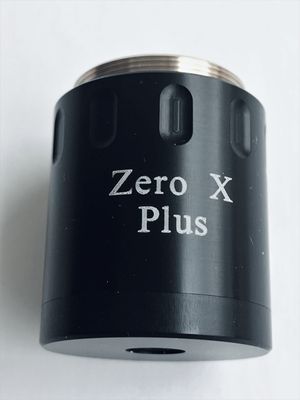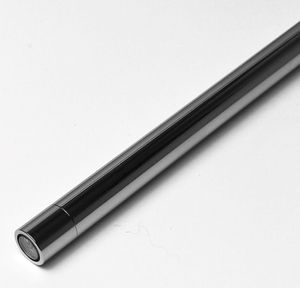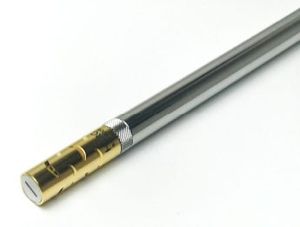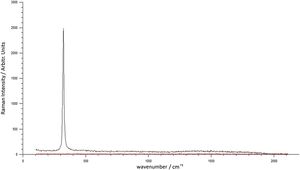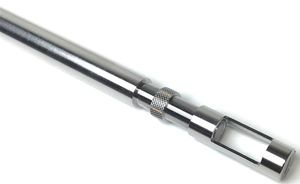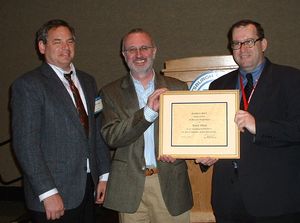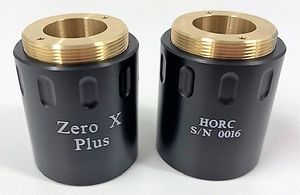
Quantitative Measurements and Improved Spectral Precision
The Zero X Plus microscope objective incorporates "Collimated Laser with Backscatter Collection" to provide "Representative Sampling" and "Real-Time Raman Calibration" to provide Improved Spectral Precision allowing for improved qualitative and quantitative analysis of complex solid samples using a traditional research Raman microscope.
- Closely related to the PhAT Probe and Transmission Raman techniques as both rely on diffuse scattering and photon migration within the sample to enhance the Raman signal and provide representative sampling.
- Unwanted Raman signals from surface coatings are significantly reduced making it ideal for coated tablets and capsules.
- Extended Wavenumber Range: The Zero X Plus optic enables the collection of representative spectra over the complete Raman spectral range (5 to 3425 cm-1)
- "Real-Time Raman Calibration" can correct for unwanted wavenumber shifts observed in Raman spectra from the laser or spectrograph due to thermal drifting or instability.
Reduced Unwanted Signal from Surface Coatings
The Raman spectra below collected from a generic Excedrin tablet using a research Raman microscope with a focusing 20X objective. The surface coating generates a strong unwanted background signal
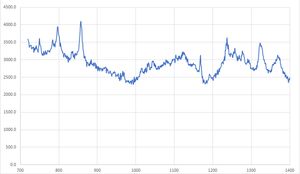
The Raman spectra below was collected from the same generic tablet using "Collimated Laser with Backscatter Collection" on the same Raman microscope. The collimated laser is transmitted through the surface coating and the Raman spectra from the bulk of the sample dominates the combined Raman spectra as per Transmission Raman.

Representative Sampling
The Zero X Plus on a Raman microscope will enable representative sampling from the "Collimated Laser with Backscatter Collection" design over the full Raman spectral range (5 to 3425 cm-1) and not just the limited wavenumber ranges of the PhAT probe and Transmission Raman. Below RIO 50 Plus (Blue Spectra) and PhAT Probe (Red Spectra)
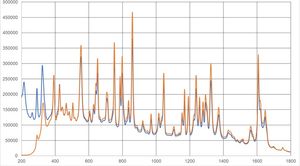
Real-Time Calibration
The Raman spectral plot below is of an Aspirin tablet with the reference Raman band from the CaF2 standard superimposed onto the spectral plot. The Raman spectra plot from the CaF2 optic is shown in the lower right corner.
Unwanted wavenumber shifts observed in Raman spectra from the laser or spectrograph due to thermal drifting or instability can be corrected for by using the CaF2 Raman reference band.
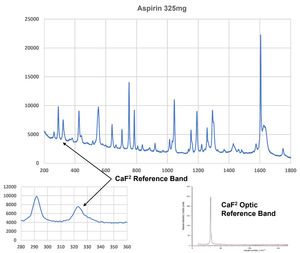
Features
- Representative Sampling: Simply switch from traditional focused point measurements to Zero X Plus large spot measurements to enable representative sampling using "Collimated Laser with Backscatter Collection" generating reproducible measurements and representative sampling.
- Extended Wavenumber Range: The Zero X Plus optic enables the collection of representative spectra over the complete Raman spectral range (5 to 3425 cm-1)
- Long Working Distance: The Zero X Plus optic enables the non-contact collection of Raman spectra from samples inside deep wellplates.
- Large Spot Size: The Zero X Plus optic enables signal averaging over SERS surfaces.
- Real-Time Calibration: An integrated CaF2 optic generates a reference Raman band at 321.0 wavenumbers superimposed onto each collected Raman spectra.
- Improved Spectral Precision: Will allow for spectral separation of each component compared to the traditional spatial separation of individual components.
- Upgrade Option: The Zero X Plus microscope objective can be used on most Raman microscopes.
Applications
Qualitative analysis by spectral separation of individual components and chemometric modeling for concentration predictions.
- Coated tablets
- Uncoated Tablets
- Capsules
- Powders
- Blends
- Microplastics
- SERS substrates
References
RAMAN IMMERSION PROBE SYSTEMS AND METHODS
U.S. Patent – 10,976,259 B2
REAL-TIME RAMAN CALIBRATION
US Patent Application Serial No. 17/386,723
